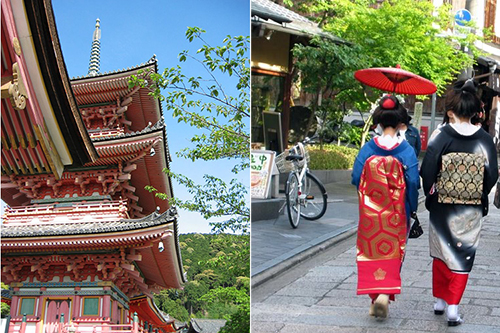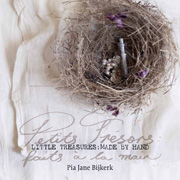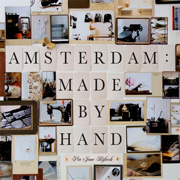Over the years, as I’ve done more travelling as an adult, to places far flung and exotic, I’ve come to realise that there are some aspects of a place that attract and intrigue me more than others. And, as Pia noticed almost from the moment I met her (insightful girl!), I am perpetually fascinated by the unseen, the behind the scenes, the “no access” side of a public space. When I travelled with my family several years ago to visit my brother in Japan, my research unearthed an amazing book, which tapped into that fascination and promised fulfillment in return for a little hard work and perseverance. The book was Old Kyoto, by Diane Durstan, and for these travellers at least, it transformed the already magical city of Kyoto into a truly memorable experience. A chance to witness the crafts and techniques of an ancient tradition, and to meet with people committed to maintaining a living tradition in a modern world.
Kyoto is a truly ancient city of art and learning, and a place where traditional techniques and methods persevere, albeit in small shops and by aging practitioners. Japan can seem like a country obsessed with modernisation and technological advancement, but hidden behind the usual tourist haunts is a world time seems content to forget, for the moment at least.
The Miyawaki fan shop seems to sit somewhere between the two worlds; the hundred-year-old shop has been modernised with air conditioning and subtle modern lighting, but retains the air of restrained elegance and luxury in keeping with its history of royal patronage. The folded fan is a Japanese invention; an intrinsic part of traditional Japanese dance and one of the few highly decorative items of dress worn to accompany the kimono. The surface provided Japanese artists with a canvas to showcase their delicate, finely-wrought brush strokes; the shop contains some extremely beautiful examples painted by eminent artists in the early 20th century.
If the idea of painting your own fan in traditional Japanese style appeals, then Saiun-do (Painted Clouds) is the place to start. The shop has been catering to artists and painters since 1863, when Tsukio Fujimoto, himself a painter of some renown, began producing the delicate plant-based water-soluble pigments of his own recipes. The current proprietor, Fujimoto-san, is the great-grandson of Tsukio Fujimoto, and the shop continues to supply pigments, minerals, brushes, paper and mixing utensils to Japanese and overseas artists alike. The tiny, one-room shop displays an array of intriguing coloured powders and minerals in medicinal vials, with brushes made from badger and deer hanging from every rafter. The Fujimotos, husband and wife, are charming and welcoming, even to amateurs, and despite their lack of English. My Mum, herself an artist, had no trouble communicating her delight.

In yet another hundred-year-old building in the heart of the city, an age-old traditional craft process has been revived to replace that of another dying art. Aizen Kobo used to manufacture the beautiful woven obi belts worn around the kimono, using a complicated jacquardweaving system. With the advent of mechanical looms, and of modern clothes to replace the kimono, the Utsuki family re-purposed their workshop to manufacture heavier linen and cotton fabrics suitable for real indigo dyeing. Here, Kenichi Utsuki still produces the beautiful dusky blue of true indigo, and is happy to demonstrate the almost mystical process maintained in huge pungent vats in the courtyard at the centre of the building. The leaves from the real indigo plant, indigofera, are fermented and mixed with lye to release the dye. They are then added to a series of heated vessels where an anaerobic bacterial fermentation process converts the insoluble indigo dye to a soluble solution. The dye is tested for it’s readiness the old-fashioned way – by taste. When ready, the solution is a murky greeny-yellow, and the immersed fabric shows no sign of the customary blue colouring until, like magic, it is lifted from the liquid, turning blue almost immediately on contact with oxygen. The piece is re-dipped several times until the desired shade is achieved, and contiues to develop with age and wear. The dyeing solution can be maintained almost indefinitely – refreshed with new fermented dye leaves – and the older vats are said to produce a superior colour. The range of products sold are extensive – from traditional happi workers coats to modern designer handbags and scarves – a truly evocative souvenir that will only improve with age.
When the tiny lanes and alley-ways of the old town are too bewildering to negotiate any further, take to the hills above the city to restore your inner peace along the tranquil temple garden paths. There is much to see in Kyoto to entice the casual tourist or interested visitor; but, like most cities, there is pure gold to delight the curious adventurer willing to delve behind the scenes.
words and photography by zoë yule.








What a wonderful post! I must visit Kyoto! Thank you!!!
August 5th, 2009 | #
Your photos and commentary are a fascinating story unto themselves – thank you, Zoë; and thank you, Pia, for introducing your reader to a wonderful guest.
August 7th, 2009 | #
I’ve wanted to visit Japan for such a long time, and this post makes me want to go even more. Thank you for sharing!
August 7th, 2009 | #
Oh Zoe, how fantastic! Great photos and post. I’m going to keep this in mind when I finally get to Japan!
August 7th, 2009 | #
Being a word and visual person restricted to one place in this world, the internet has opened and blessed my world with many sights and new creative friends and ideas. Thanks to you both for your willingness to share with such generosity.
Beauty overwhelms.
August 7th, 2009 | #
What a beautiful post. Nice photos and great writing. Kyoto will now be added to my travel wish-list.Thanks Zoe for bringing the ‘far away’ a little closer.
August 7th, 2009 | #
I hope the Japanese people don’t forget their culture and traditions. This looks wonderful. I don’t know if I’ll ever get to Japan, but if I do, I’ll keep this book in mind. Thanks for writing and sharing your photos!
Trudi
August 8th, 2009 | #
WHAT a lovely, lovely post. i lived in japan for a year and LOVED it. i took ikebana classes, and also tea ceremony. i would have loved to have had this book, and explored some of what you explored! next time!
EXCELLENT photos – wow!
August 10th, 2009 | #
I was only in Tokyo and Hakone when I went to Japan. I am sad that I missed Kyoto now after reading your awesome entry! My heart belongs to China and so when I went to visit Japan I had no idea that I would fall so in love with the country. I almost felt like I was betraying my true love, China. I adore the photo of the close-up of the temple with modern day Kyoto in the background. Great capture! Did you buy an obi belt or a fan???
August 14th, 2009 | #
Thanks everyone, for your appreciation! This trip was taken many years ago, with only a very ancient digital camera in tow, so I was so glad to find enough reasonable photos to share with you all! I was bowled over with memories looking back over them – it’s magical to go back over old travels. And don’t worry, Andi, I did indeed by myself a fan, though I could only afford a teeny tiny little one 🙂
August 17th, 2009 | #